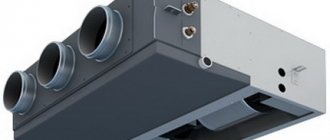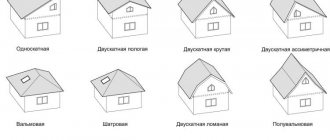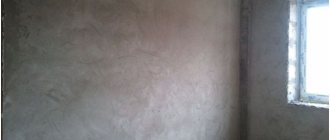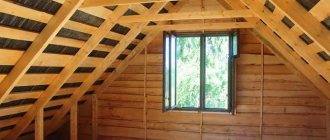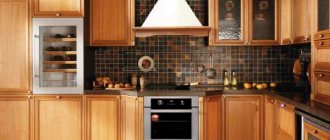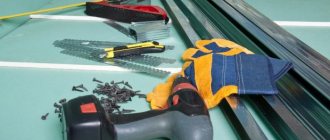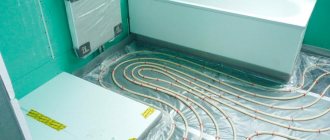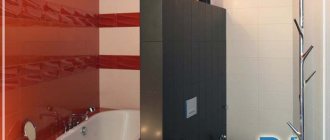What is an inverter type air conditioner? In appearance, such climate control devices are no different from their own kind. The external assembly is also typical for representatives of such devices. The same can be said about functions. But at the same time, an inverter-type air conditioner is considered a more advanced device with stable operation. An analysis of the capabilities of inverter technology will help you understand whether this is true or a publicity stunt.
Principle of operation
The basis of any air conditioner is the compressor, since it is responsible for moving the refrigerant through the main pipes and devices. To understand what has changed with the advent of inverter air conditioners, you need to compare the operating principle of the compressor of each of these systems.
Operation of a standard split system
When the air conditioner is turned on without an inverter, the indoor module sensor monitors the temperature in the room. As soon as it reaches the values you set, the relay is activated and gives the command to turn on the compressor.
The installation, in turn, begins to work at full capacity, quickly bringing coolness. When certain indicators on the thermometer are reached, it turns off.
When the temperature rises to the desired mark on the thermometer, the sensor is triggered again, gives a command to the relay, which turns on the compressor motor and the cycle repeats.
Inverter air conditioner
Operation of inverter air conditioner
Let's consider how an inverter air conditioner works? When the split system is turned on, the sensor of the indoor unit also monitors the temperature in the room and “compares” it with the configured values. When the set temperature is reached, the temperature sensor is activated and transmits a command to the relay and to the compressor motor.
The unit also starts working at 100% load, quickly cools the air in the room, but then does not turn off completely. An air conditioning device with an inverter does not need to re-cool the entire volume of air in the room each time; it only blows out a certain amount to create the desired temperature.
Of course, this ability of the climate control device is an advantage, since energy costs are reduced, drafts disappear, and the noise level is greatly reduced. An undoubted advantage of inverter air conditioners is that the compressor continues to constantly operate in a given temperature range at 10–95% of its capacity.
Functionality
The control system for an inverter air conditioner is usually built on the basis of a microcontroller.
The computing power of modern chips allows not only to control the inverter switches, but also to implement many additional functions:
- Control not only indoor temperature, but also other microclimate parameters, for example, humidity, dust.
Accurate measurement of outside air parameters and making appropriate adjustments to operating modes.- Determining the presence of people in the room.
- “Hot” start with saving settings after a power failure.
- Control of air flow indoors - intensity (by adjusting the speed of fans) and direction (by swinging the blinds in the vertical and horizontal planes).
- System self-diagnosis.
- Control via BlueTooth and/or Wi-Fi channels and other functions of IoT (“Internet of Things”) and “smart home”.
The advantage of inverter split systems compared to conventional ones
When choosing an inverter or a conventional air conditioner, you need to fully understand the difference between them.
The motor of the inverter air conditioner adapts to the impulsive temperature changes in the room and automatically selects the optimal power range with the lowest energy consumption. In addition, the speed of the fan impeller changes, which significantly reduces the noise level and creates more comfortable operation of the device.
To determine which air conditioner is better - inverter or conventional, you need to understand that the absence of frequent engine starts for the compressor extends the life of this device. On average, it can last 15-18 years, when similar non-inverter units work, according to statistics, for 6-8 years.
These inverter air conditioners are differentiated by minimum, medium and high power. Unlike non-inverter devices, the maximum performance is a certain power reserve, usually about 20%. Accordingly, due to this, the air conditioner will quickly cope with achieving the desired cooling or heating mode in the room.
Reliability
Due to the absence of the most dangerous transients for electrical equipment, the service life of the compressor and fan motors in an inverter system can significantly exceed that of conventional air conditioners.
At the same time, the presence of a complex electronic unit and an increase in the number of circuit components lead to a slight decrease in reliability.
In general, inverter systems are superior to non-inverter systems by an average of 25-40%. However, this is true for high-quality equipment from well-known manufacturers.
Influence of the inverter on noise level and power consumption
Inverter split systems work differently than standard air conditioners. The compressor is powered by a DC motor. The control module in split systems converts direct current into alternating current of a given frequency. This process is called inversion.
This transformation allows you to change the rotation speed of the compressor engine over a wide range, and accordingly, the creation of coolness and warmth. The power of the motor is regulated by simply changing the voltage: more voltage means the rotation of the motor shaft increases.
Accordingly, the movement of refrigerant from the compressor accelerates. And vice versa, the voltage decreases - the engine speed decreases, and the speed of freon through the tubes decreases. The standard device uses a compressor with an AC motor, and its power is regulated only by turning the motor on or off.
It turns out that the inverter device is designed to change the standard frequency of the electrical network. The device has an integrated control board, through which the operation of the device is regulated. It is located in the outdoor module and regulates the number of times the device is turned on.
Consequently, for air conditioners with inverters, the compressor moves the refrigerant whenever the split system is turned on in cooling mode (at the same time, its speed is either higher or lower). This has three important advantages:
- The engine has no starting torque.
- Possibility of smooth regulation of cool air movement.
- The inverter air conditioner in the apartment operates in the created mode.
As a result of the first advantage, the split system consumes approximately 20-25% less electricity than a classic climate control device. The second point indicates that the compressor of an inverter air conditioner operates in the range of 0.5-1˚C degrees (and for standard split systems the range is 1-5˚C).
The third advantage means quieter operation of the air conditioner. Thanks to this mode, the air conditioner operates silently and is often used in bedrooms at night. At the same time, it switches to an economical mode with slow rotation of the fan impeller. Inverter wall-mounted air conditioners from Hitachi are especially suitable for this setting.
How does this happen
Now we will look at what inverter power control of an air conditioner is. The electronic control unit of the system converts the alternating current of the network into direct current, and then transforms it into the current of the required frequency to power the compressor. The frequency of the current directly affects the speed of the compressor. That is, with this approach it becomes possible to adjust the load of the power unit over a wide range.
Advantages and disadvantages of inverter split systems compared to conventional ones
Of course, such climate control equipment has its pros and cons. The main distinguishing advantage of inverter air conditioners is that they have no restrictions during operation. Traditional devices are produced by manufacturers with a resolution of no more than 8 hours a day.
In addition, an air conditioner with an inverter has the following advantages:
Smooth operation of the device. There will be no power overloads while using this device. After all, as you know, at the moment the engine starts, a peak load is created for the entire network in the house. Accordingly, their absence provides energy savings of up to 40%, so the climate control device is considered an economical device.
Small temperature range. This type of air conditioner precisely maintains the set temperature. Comfortable air flow: during operation, a soft air flow comes out strictly within the specified temperature range. This largely limits the likelihood of catching colds (as happens when using a conventional analogue).
The minimum noise level (18-22 dB) allows you to use this device even at night (for an ordinary device, the noise level is 30-33 dB).
Long service life.
Heating of premises in the cold season. The ability of an inverter air conditioner to heat a room at street temperatures reaching -25 degrees.
There are also disadvantages to inverter air conditioners:
- The electronic circuits of these devices react to voltage changes and can burn out during sudden surges.
- Soft thermoregulation is not suitable for all rooms. They are good for bedrooms and children's rooms, but are not suitable for hotels, offices, that is, where doors are constantly opened. And since the air exchange changes, the air conditioner is simply not able to constantly regulate in the desired mode.
- High price. Perhaps the most powerful counterargument. Not every average person can afford such a purchase.
Causes of problems and diagnostics
Despite the simplicity of the design and the apparent reliability of the components of washing machines that use an inverter motor, they also fail. The most common reason is a malfunction of the Hall sensor. In LG machines, such a malfunction is displayed by the error code “SE” on the digital display.
Figure 6. Hall sensor
The problem can also be diagnosed based on the metallic rattling sound produced by the device. All this is accompanied by the rotor stopping and its inappropriate behavior. Replacing a suspected faulty element with a known good one is the only way to confirm your fears. The difficulty is that it is impossible to diagnose the motor outside of the washing machine, except by ringing the phase windings using a digital multimeter.
Figure 7. Checking coils with a multimeter
Malfunctions in the inverter can also cause a malfunction, but it is not possible to identify such a malfunction without special equipment and knowledge in electronics.
How to replace the motor and connect it to the washing machine - read on the website at the link.
Tips for choosing a model
A split system is an excellent option to get rid of the summer heat and create a comfortable microclimate in your home at any time of the year. In the climate control equipment market, the sale of inverter air conditioners from different manufacturers has been established.
In order not to make a mistake when choosing this expensive air conditioner, you need to know the parameters of these devices. First of all, you need to pay attention, of course, to the power and noiselessness of the unit.
Silence. In the passport for the device, as a rule, this parameter is indicated for the indoor and outdoor modules. Of course, the noise indicator of the first block is more significant, since it is located indoors. In this case, noiselessness is expressed in decibels and should be shown on the air conditioner plate at a level of 22-24 dB.
This noise is almost unnoticeable during the daytime. A split system, by definition, produces less noise than any other system consisting of two blocks. At night, there are fewer extraneous sounds and the noise from the air conditioner is more noticeable.
Therefore, when choosing a model for the bedroom, it is recommended to choose it with a “night mode”. This function makes it possible to reduce noise on some split systems to 18-21 dB.
Power. When choosing performance, these devices have their own peculiarity. Let’s say the device has a power of 2 kW, but you should not accept this figure as valid. The required performance and the power consumed are different characteristics.
Typically, the power to create coolness is about three times greater than consumed. This means that if the calculation results in a power of 2 kW, then the power consumption will be about 700 W. Excessive productivity is also undesirable, as this will lead to unnecessary energy consumption and financial costs.
Location. When choosing which inverter split system or monoblock to choose, the characteristics of the room are of great importance. The outdoor unit can be mounted on a wall, roof or foundation. And the internal module is placed on the floor, wall and even behind suspended ceilings. Where it is impossible to install a wall-mounted unit, you can make your choice on a mobile (floor-standing) inverter air conditioner.
Installation. When installing such expensive inverter air conditioner models, you should pay due attention to the choice of installers. It is recommended to contact the same company (if possible) from which you purchased this unit, since they bear full responsibility for the installation and operation of this air conditioner.
Additional functions.
The efficiency of operation is greatly influenced by many additional modes that are equipped with current inverter devices:
- Heating the apartment during the off-season period.
- Air purification.
- Air ionization.
- Room ventilation.
When choosing a split system based on modes, you need to understand what this or that function gives you. Remember that the more a device has any additional modes, the more expensive it will be.
What are the similarities between the varieties?
Split systems of these two types are designed to solve the same problems.
This means that with their help you can perform the following operations with air masses:
- cool;
- warm up;
- ionize;
- cleanse
All of the above processes can be effective in any volume. After all, manufacturers supply split systems for small apartments and huge office and retail premises, consisting of many separate rooms.
Both types of split systems are designed to solve the same problems. Their appearance is also similar, as a result they will be appropriate in any room
The design of these subtypes of climate control equipment is visually similar; they consist of blocks:
- external;
- indoor unit - if necessary, there can be several of them.
Control is carried out using functional and convenient remote controls. In both cases the maintenance work is similar. So, you will have to regularly clean the filters, replace them, and update the freon. If these points are ignored, then the service life is reduced, and significantly.
The installation procedure for air conditioning systems is equally complicated and can cost a hefty sum, reaching half of their cost. In any case, you should not install them yourself - it is better to contact experienced specialists.
Preventative work
If you use the air conditioner for a long time, dust and grease accumulate on its elements. This applies to the heatsink, filters, fans and other parts inside the case. As a result, microorganisms harmful to human health are formed in these places and are carried along with the air.
Dirt deposits negatively affect the operation of all equipment, which requires cleaning the components and performing basic preventative repairs of the device. If you do not do this, then after some time the air exchange will noticeably deteriorate and the load on the device and the electrical network will increase.
In addition, fluff and leaves collect on the body of the outdoor unit, which changes the operation of the heat exchanger and worsens the refrigerant conversion procedure. Thus, when servicing such climate control equipment, you can clean or change dirty filters, a condenser (heat exchanger) from dust and fluff, and a fan from fat deposits.
All these works are specified in the instructions for this device. The rest of the preventive maintenance should be left to the specialists from the service center. In order to fully complete the scope of work, you must have experience in maintenance, as well as special tools and equipment.
To avoid incorrect maintenance and possible health risks, the best option is to entrust this process to professionals. This will save you energy, time and protect you from danger.
Often asked
The complexity of the circuit increases the cost of repairs. Is an inverter air conditioner beneficial from this point of view?
Indeed, repairing an inverter air conditioner is much more expensive than usual, but only if the inverter or control system fails. Other repair options for non-inverter and inverter systems cost the owner almost the same. However, it should be noted that manufacturers provide a long warranty on equipment (usually at least 3-5, and for the premium class - up to 10 years or more). During this time, the purchase of an inverter system pays off due to energy savings.
The cost of an inverter air conditioner is higher than that of similar conventional models. Does installing it pay off?
Only due to energy savings, the choice in favor of an inverter system pays off within 3-4 years.
Are powerful multi-split systems equipped with inverters?
Today, manufacturers of climate control equipment offer inverter split and multi-split air conditioners, equipment for industrial use. At the same time, as power increases, the gain in energy efficiency becomes even more significant.
The presence of an inverter in the circuit implies additional electrical losses. Is the gain in electricity as great as manufacturers show?
Due to the use of modern power field-effect or IGBT transistors as inverter switches, electrical losses on the switches turn out to be negligible (they can be judged by the radiator installed in the electronic unit) against the backdrop of 30-40% energy savings for ordinary models.
Thus, inverter air conditioners are superior to classic “On/Off” systems in almost all respects. The higher cost of technological devices is more than offset by gains in reliability, energy efficiency and functionality.
Choosing the best model
Many buyers are interested in the question of which split system to choose. The ever-increasing demand for accurate and economical air conditioners has led to an expanded range of these devices from manufacturers of climate control equipment. The variety of brands makes it difficult for buyers to choose, so it is necessary to describe such models in more detail.
Daikin. This popular company makes products that are trustworthy. Although the devices of this company have a laconic design, at the same time they have a variety of modes and this is their main advantage.
Mitsubishi. Mitsubishi products do not need advertising - split systems with an inverter from this manufacturer will be an excellent choice for buyers. They have a stylish design and impeccable build quality.
Panasonic. The devices of this company show the quality of premium equipment. With wide functionality, ultra-reliable devices are suitable for various categories of buyers.
Toshiba. This company was the first to develop and introduce the production of modern air conditioners using the inversion principle, which means that these products deserve special treatment from consumers.
Hitachi. Another company well known to consumers. It produces products for both household use and powerful devices for production.
How to choose an inverter air conditioner
Manufacturers from many companies offer their products on the split market. The undisputed leaders in this area are the eternal competitors - Daikin and Mitsubishi Electric. The main direction of work of Mitsubishi Electric is the production of the quietest air conditioners (noise level 19 dB). Daikin products are somewhat more attractive in price than competitor offerings. But still, these are expensive brands and not everyone can afford them, so I can’t call them popular.
Among comfort-class products, I recommend considering products under the Ballu and Hisense brands.

